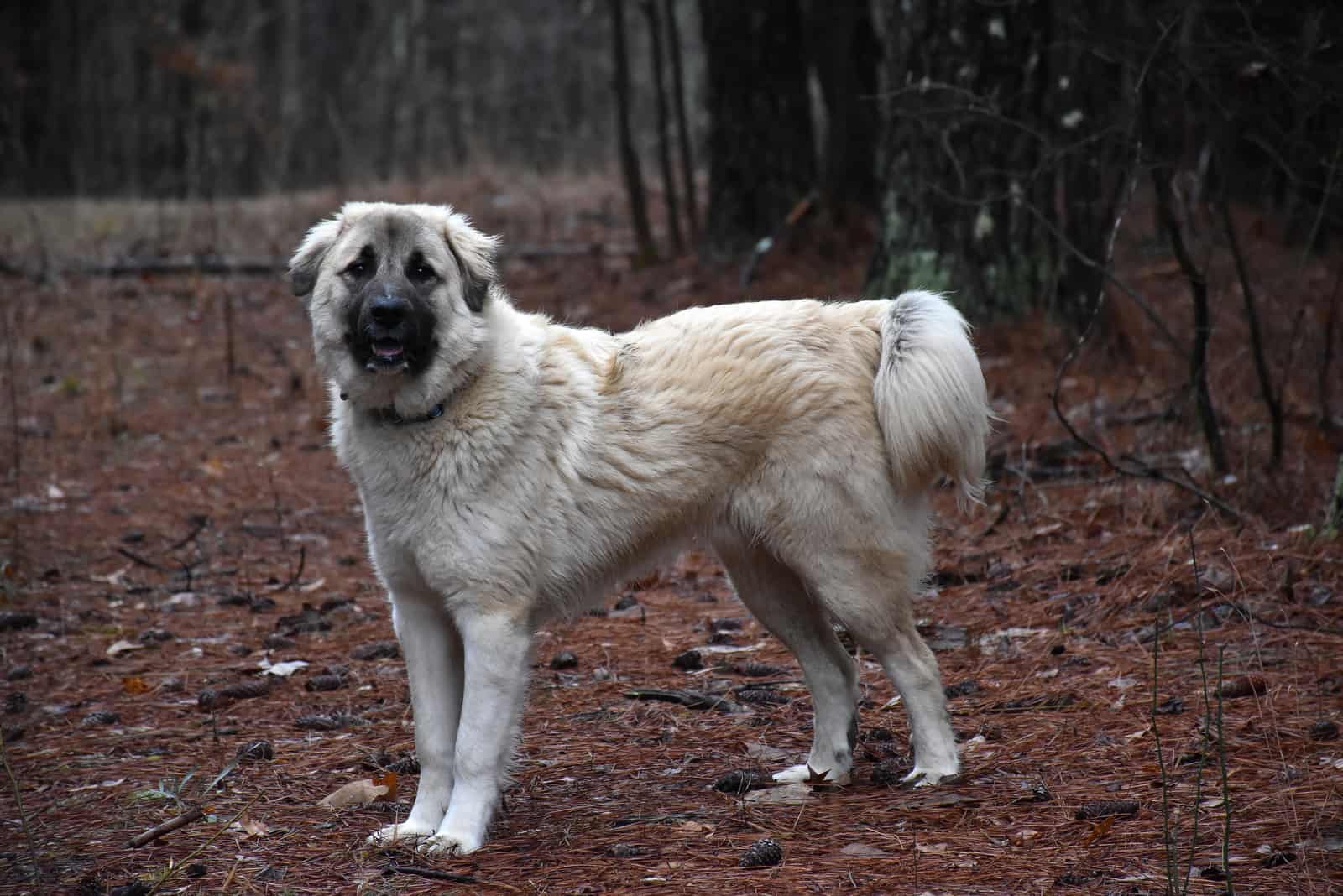Today, we’re discussing the many lovely Anatolian Shepherd colors!
The Turkish dog, the Anatolian Shepherd, is a large dog that turns heads everywhere he goes.
From protecting cattle to attacking cheetahs, and serving as loyal companions; is there anything these dogs can’t do?
The Anatolian Shepherd is a purebred herding dog that will truly impress you with its visual appearance and docile temperament. These dogs are born guardians with strongly-developed protection instincts.
Even though Anatolian Shepherds are working dogs, they can still be wonderful family companions, and be even great around young children.
Their temperament will hook you, but their lovely appearance will make you stay.
Here are all the Anatolian Shepherd colors discussed in depth.
What Kind Of Dog Is The Anatolian Shepherd?
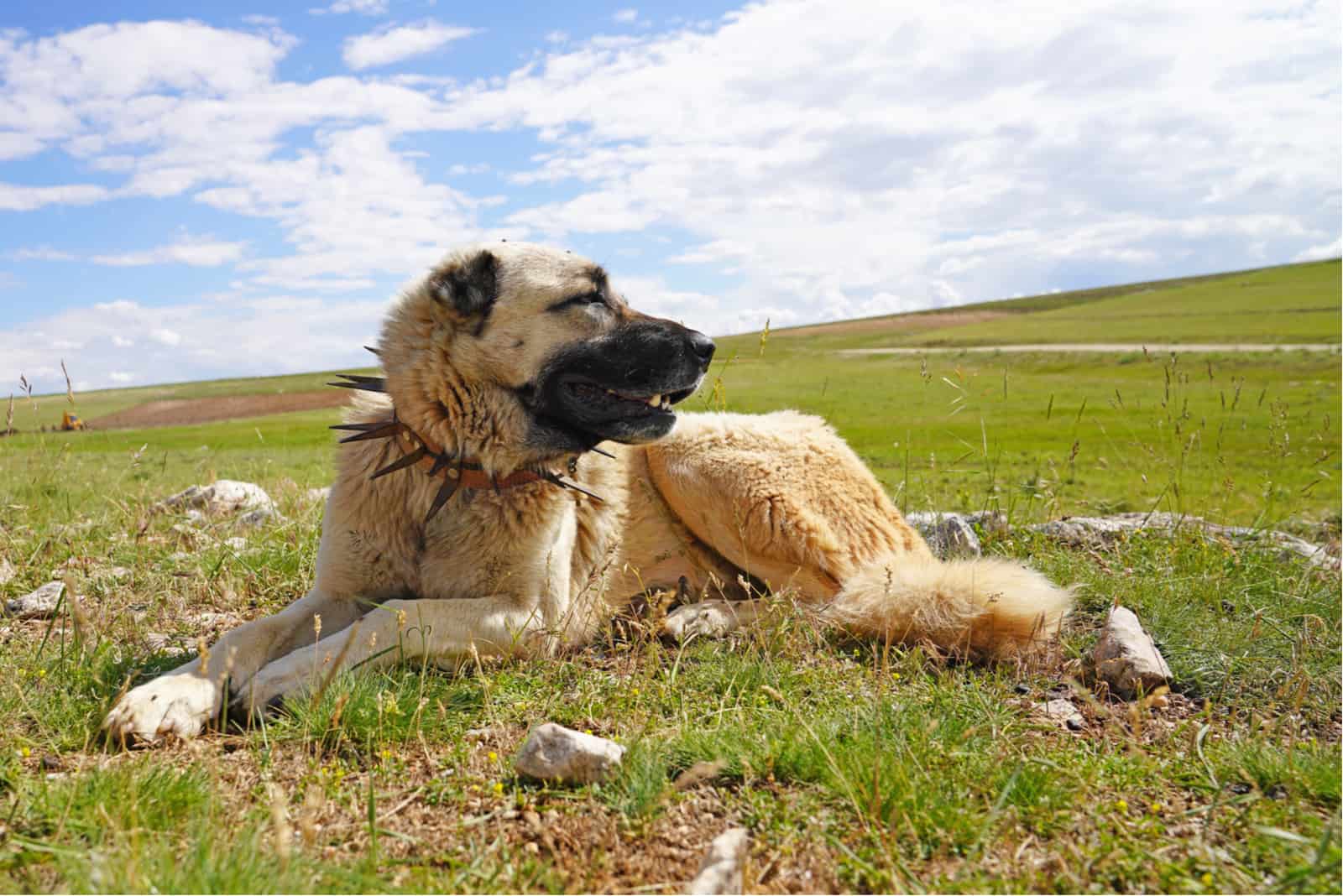
The Anatolian Shepherd is a native dog breed of Turkey, known under many other names such as Kangal, Goban Kopegi, and Anatolian Karabash. No matter what you call these canines, they all stand for the same dog: a brave, extremely hardworking shepherd.
As the name suggests, the Anatolian Shepherd comes from Turkey’s region, called Anatolia. This region has been known for raising cattle for centuries; hence, the need for a courageous dog like the Anatolian Shepherd.
The Anatolian Shepherd is one of the finest livestock guardians in the canine world. They’re even more ethical and hardworking than German Shepherds! This is a versatile dog breed that can also serve as a guard dog for humans.
Throughout history, the Anatolian Shepherd used to protect the flock from wild animals such as wolves and bears. The attacks were quite common, and they caused lots of damage to humans. But, when the Anatolian Shepherd took over, wild beasts suddenly no longer felt confident to attack at night.
No wonder! Did you know that the Anatolian Shepherd has the most forceful bite in the entire canine kingdom? You definitely wouldn’t like to be bitten by one.
Luckily, that’s not going to happen unless you’re really, really mean to them. Anatolian Shepherds have a heart of gold. They’re sweet and protective, with high energy levels, always keeping an eye on their family members.
If you want a family pet that will jump into fire for you, then the Anatolian Shepherd is the canine for you.
The Appearance Of The Anatolian Shepherd
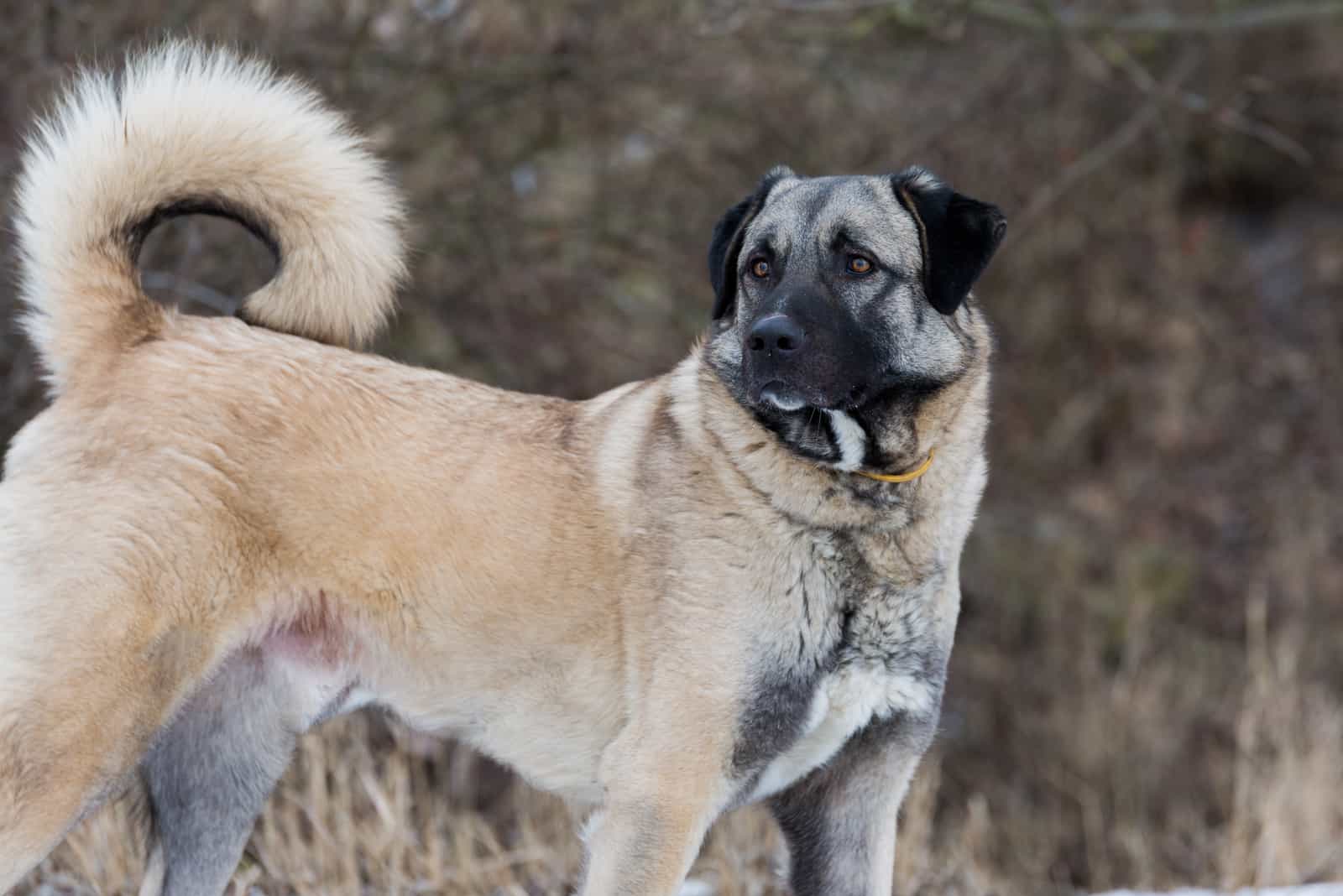
The Anatolian Shepherd dog is truly impressive. This is one of the biggest dogs of them all, and is also considered a gentle giant.
The American Kennel Club (AKC) breed standard for the Anatolian Kangal and their growth chart says they usually grow up to weigh anywhere from 110 to 150 pounds, and stand tall at 29 inches at the withers. Female Kangals are a bit smaller, weighing no more than 120 pounds, and standing tall at 27 inches.
Compared to some other shepherd dogs, this is quite big.
The Anatolian Shepherd looks a lot like the Great Pyrenees or the Kuvasz, but they have signature markings which will help you distinguish them from the other dogs.
The Anatolian Shepherd has a muscular build and a broad head. You can tell their bones are nice and strong. These dogs have triangular-shaped ears that droop to the sides, and they should never stand erect. That’s a clear violation of the breed standard.
Everything about this dog is big and muscular, including their tail. A small Kangal is either a result of poor breeding or not a Kangal at all.
Everything About The Anatolian Shepherd Colors
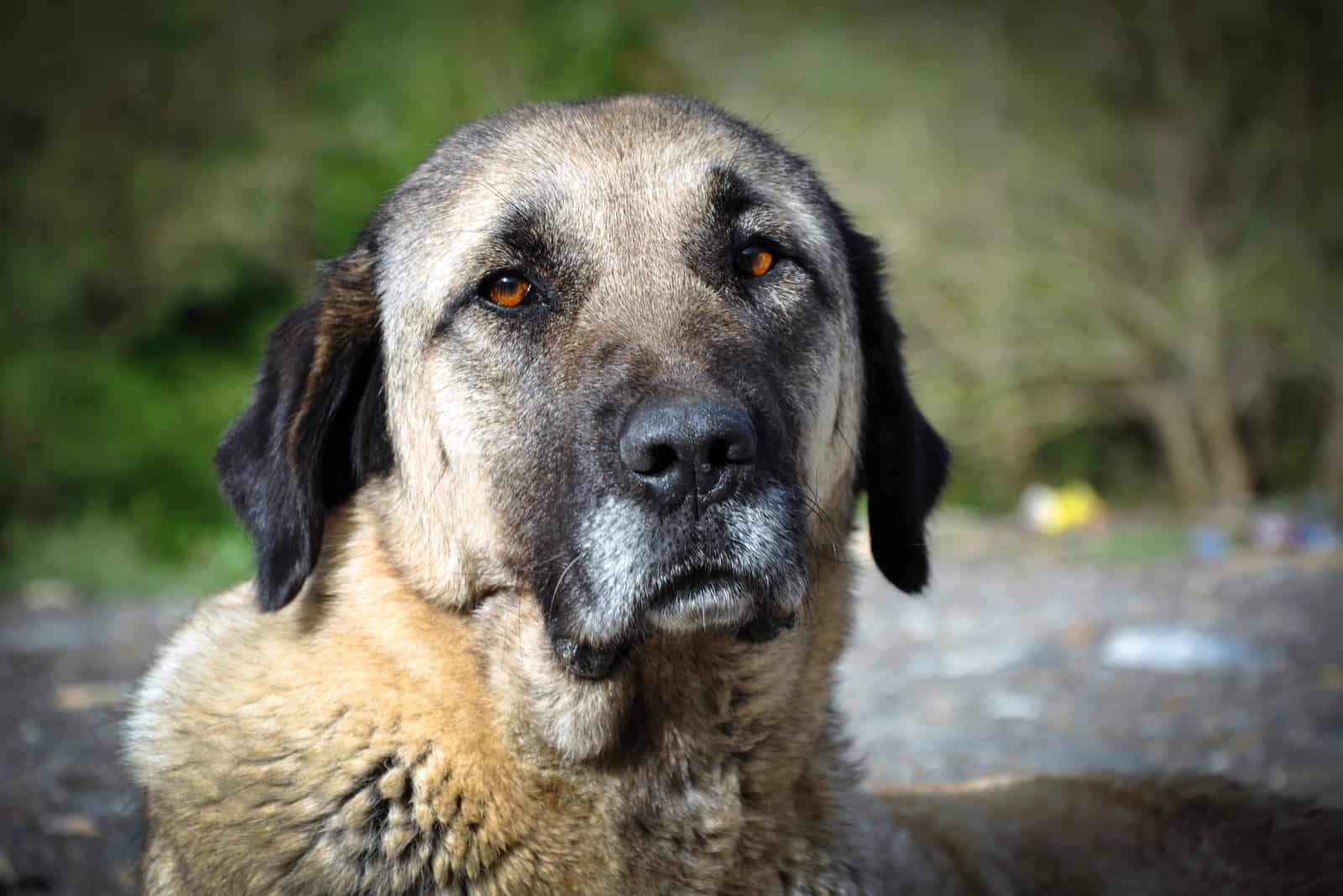
I have something for you to think about before we discuss Anatolian Shepherd colors in detail.
What kind of coat should shepherd dogs carry if they keep animals, such as goats and sheep safe? Seems like Mother Nature has taken care of it. A lot of shepherd dogs are either white, off-white, or grayish. That’s to help them blend in and use the surprise factor on intruders.
Our Anatolian Shepherd buddy is excellent at herding, and it’s natural for him to come fashioning the creamy coat. But, this flock guardian also comes in other colors besides cream.
These are the standard Anatolian Shepherd colors:
fawn
white
brindle
white and biscuit
liver
red fawn
blue fawn
gray fawn
pinto, etc
Any color is welcome, meaning there is no forbidden color that might disqualify your Anatolian Shepherd.
Fawn Anatolian Shepherd
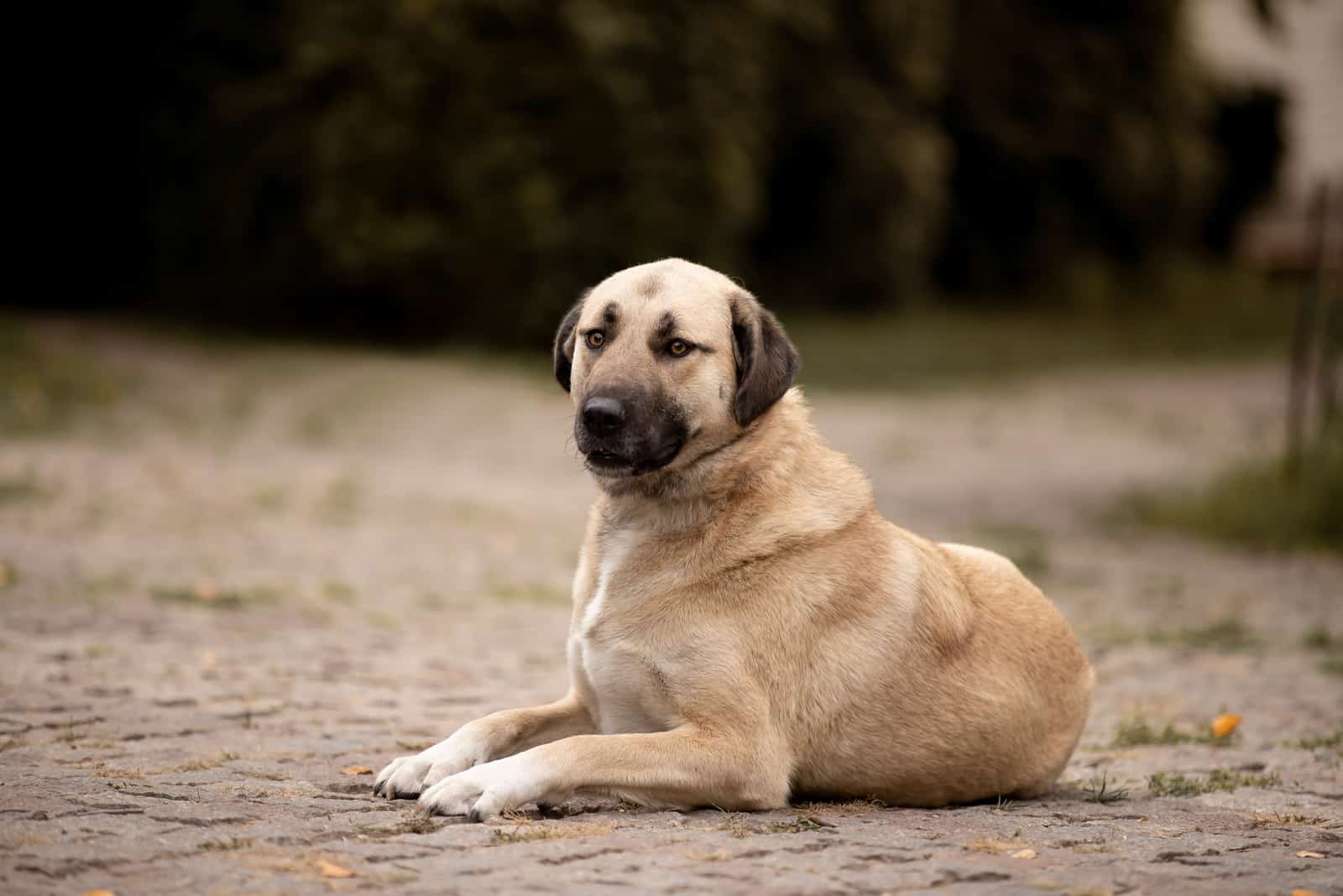
The fawn Anatolian Shepherd is quite common. It’s one of the signature coat colors of this breed. Since the Anatolian Shepherd is a Mastiff dog, it’s natural for them to feature the fawn coat color.
This gives the dogs a natural look. It’s earthy, a bit elegant, and simply stunning.
Most dog breeds have a solid fawn coat. But, that’s not the case with the Anatolian Kangal. They actually have a fawn coat with sable points. Having a patterned coat is normal for Kangals, and accepted by official clubs.
The fawn color is the result of the agouti locus.
To understand the fawn coat a bit better, you’ll need to know that the agouti locus has four alleles:
AY, or the sable allele, which gives the fawn coat a reddish tint.
aw, or the wolf color, which gives the wolf gray color.
at, the black and tan allele for the black and tan coat.
aa, the black pigment resulting in a solid black coat.
The last two alleles aren’t that common with purebred Anatolian Shepherds.
White Anatolian Shepherd
White is definitely the most popular coat color found with lots of dog breeds, including the Anatolian Shepherd. While some people argue whether white is a color or not, we can only add that white, in terms of dog coat, comes in various shades.
That’s right, shades!
Some dogs are snowy white like American Eskimo dogs, while others have a yellow tint hidden in their coat.
Anatolian Shepherds aren’t pure white dogs. They have that tint, as well as the signature black mask on their face. This is what separates them from albino dogs.
Albinism and white coats go hand in hand, and it’s really difficult to tell which dogs are albino and which are not.
This genetic condition isn’t too common with Anatolian Shepherds. Think of albinism as a result of poor breeding practice and unreliable breeders.
Brindle Anatolian Shepherd
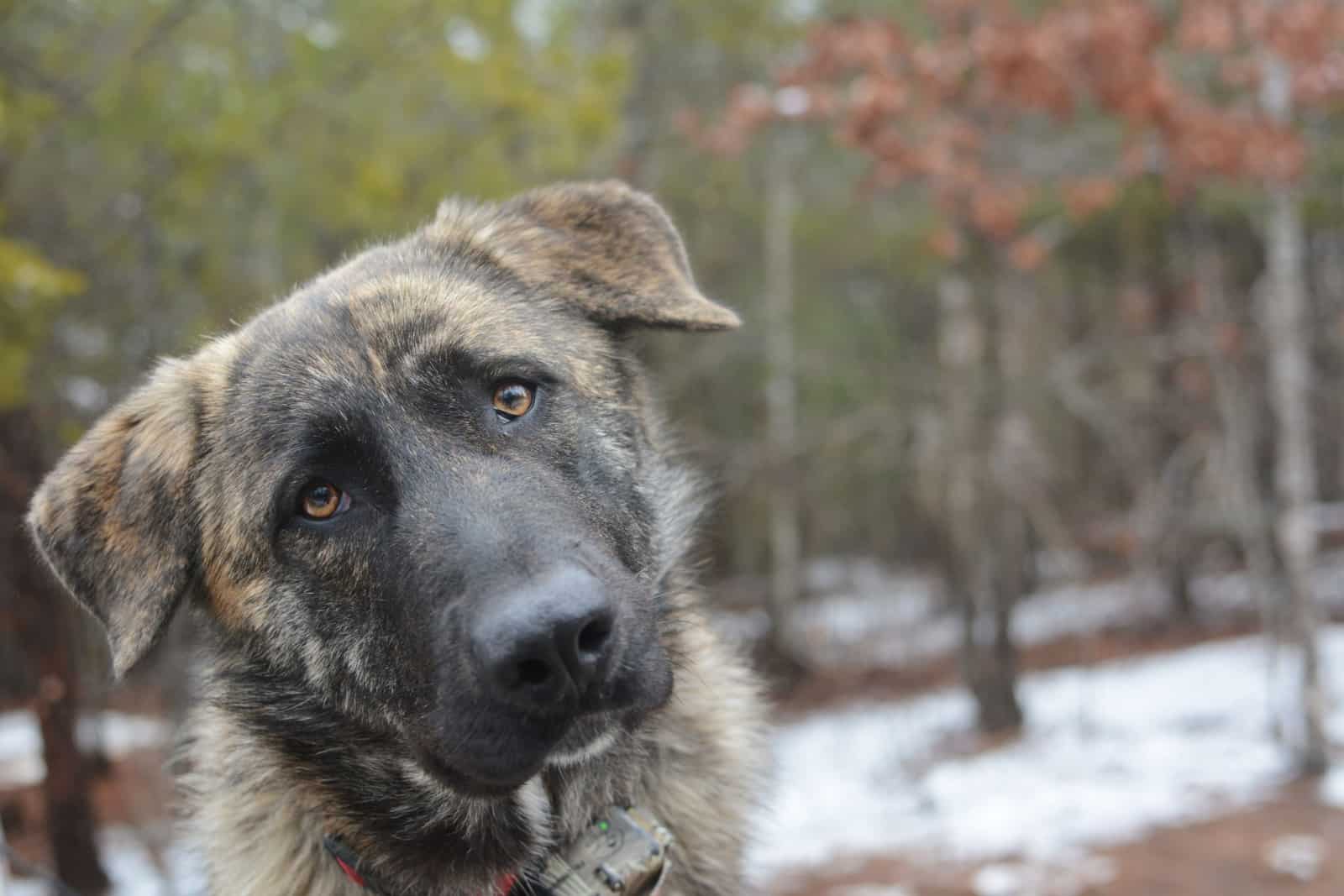
Technically speaking, brindle is not a coat color like black or white. This is actually a pattern that overlays a color underneath.
Simply put, the base color is covered by the brindling of the coat. Even though it’s a pattern or a marking, dog experts usually classify brindle as a coat color option. Markings are usually something small, while brindle covers the dog’s entire body.
The base coat is usually fawn or sable, covered with the brindle pattern. Brindle Anatolian Shepherds can either have heavy or light brindling, and the base coat can come in light or dark shades. It’s usually a contrasting combination of a light base with a dark pattern overlay.
Biscuit And White Anatolian Shepherd
You might recognize the biscuit and white coat color as cream. Some dog experts name them cream, but Kangal enthusiasts say this is biscuit and white.
So, what exactly is this coat color like?
The white part is pretty obvious. As far as the biscuit part is concerned, it’s a tannish coloration on the dog’s ears, and sometimes on the rest of the body.
Liver Anatolian Shepherd
The liver coat color appears on Anatolian Shepherds as a result of the absence of the dominant E gene. The bb gene, or the recessive brown, works to produce the popular liver coloration.
Dogs with this recessive color have their eye rims, nose, and lips colored brown… not black. Even their eye color is lighter.
The Anatolian Shepherd carries the liver coat as the result of the recessive bb brown color, with the AY sable color. This means such dogs won’t have black pigment shown anywhere on their body. The mask will be brown, and the base coat will have an orange tint.
Blue Fawn Anatolian Shepherd
Although blue fawn is considered a coat color, technically… it isn’t.
The blue fawn color means a blue mask, just like the popular black mask. The base coat will also have a bluish tint, but it will be a different shade of blue. Normally, the blue mask is a bit darker.
It may sound a bit confusing, but you’ll recognize a blue Anatolian Shepherd if you ever see one in person.
Which Markings Are Allowed?
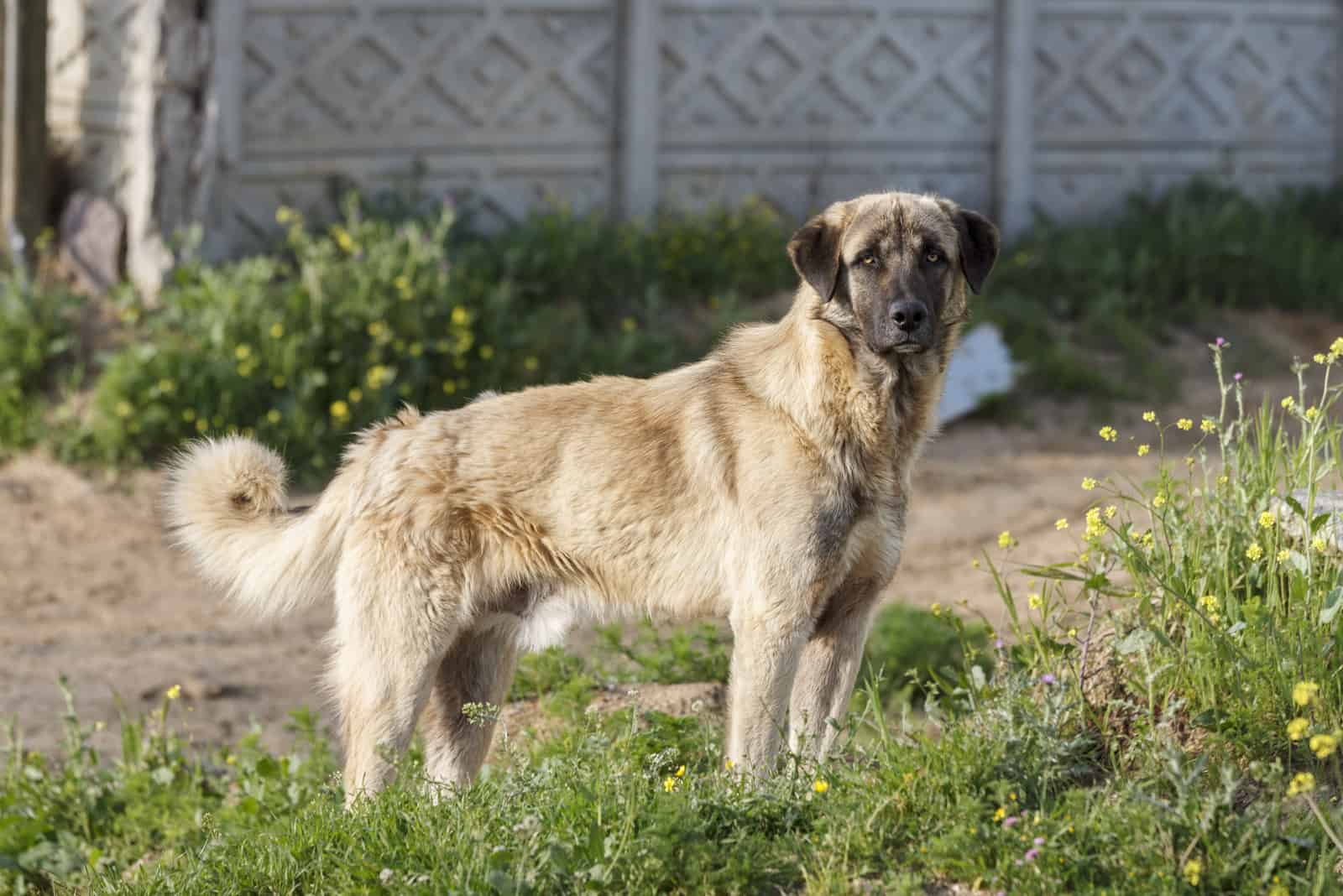
Anatolian Shepherds are allowed to have markings on their coat. That’s not considered as a fault when entering dog competitions. As a matter of fact, Anatolian Shepherds should come with said markings. It’s highly desirable and considered a sign of pureness of the breed.
According to the Anatolian Shepherd Dog Club Of America, and the AKC, the following markings are allowed:
pinto
Dutch markings
brown mask
black mask
silver mask
pinto, black mask
Pinto Anatolian Shepherd
Pinto Anatolian Shepherds have 50% or more of a white coat, while the rest of the coat is fawn in most cases. Still, other color combinations are allowed with white.
The white part can be found down the middle of the dog’s back.
Dutch Markings
Dutch markings are actually Irish markings, but Anatolian Shepherd enthusiasts prefer to call them Dutch.
Anatolian Shepherds with these markings have a white collar around their neck and a white blaze on their face.
Silver, Black, Brown Mask
The silver mask can be found with dogs that are considered to have a blue fawn coat. It’s usually darker than the base coat.
The black mask is pretty standard – it is the obvious black mask on the face.
The brown or liver mask is a shade of brown masking over the base coat.
Anatolian Shepherd Eye Colors
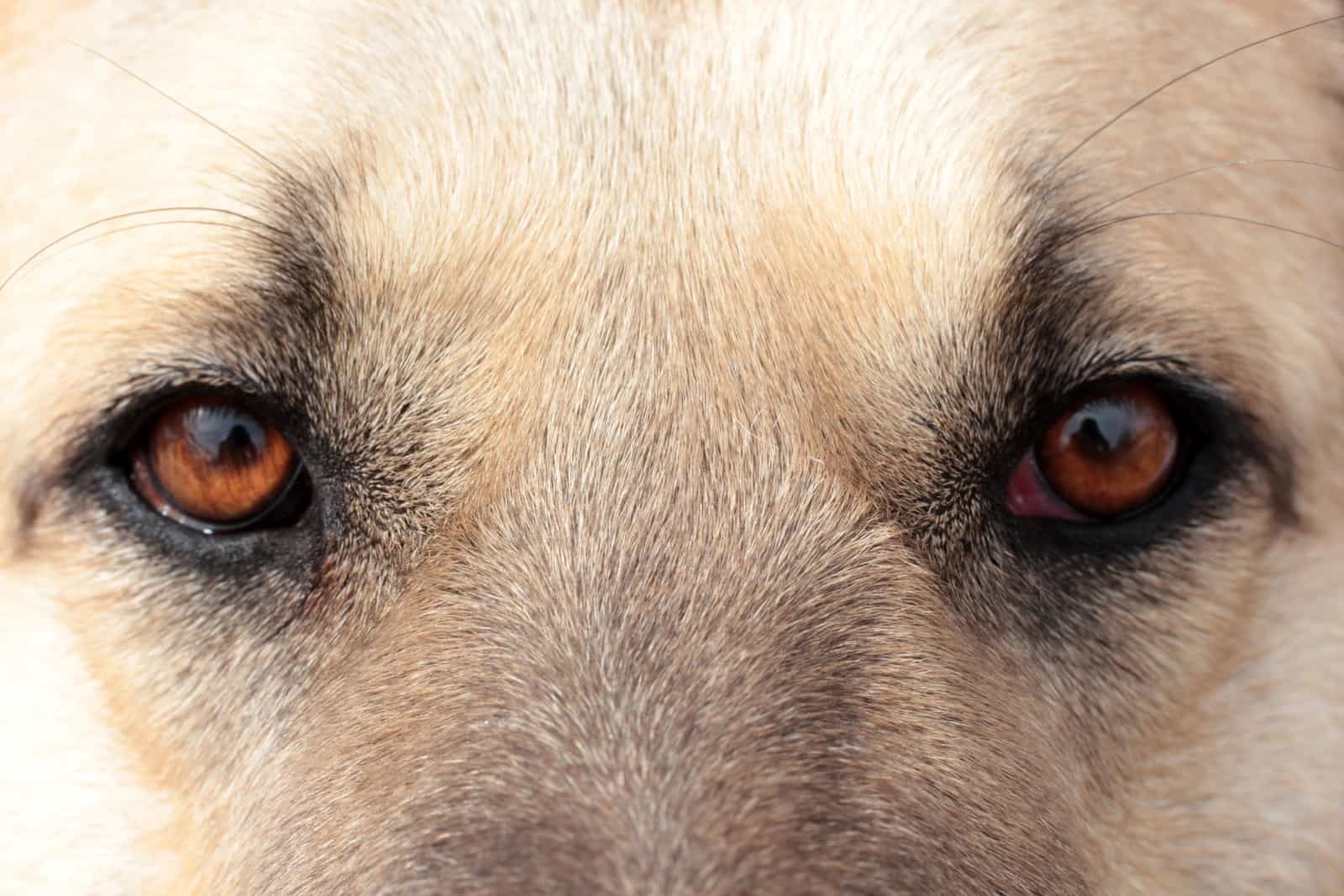
Some dog breeds, like huskies, have different eye colors. It’s not unusual for one eye to be different from another. This is called heterochromia. Look it up here!
But, the Anatolian Shepherd is not a breed that is susceptible to this genetic change. They have solid-colored eyes, which come in lots of shades of brown: from light amber to dark brown.
Your Anatolian Shepherd should not have blue eyes. This eye color is strictly forbidden with this breed, and it may be a sign of either inbreeding, genetic problems, or simply poor breeding.
Heterochromia is also faulty, and a pup with two eyes of different colors will be immediately disqualified from official AKC competitions.
The breed standard for the Anatolian Shepherd claims that the eyes should be set apart, and be of medium size, almond-shaped, and brown. The eye rims should be solid black or solid brown. If there’s even a spot of pigment missing on the eye rim, that is also considered a fault.
Which Coat Type Does The Anatolian Shepherd Have?
The Anatolian Shepherd is a huge dog. That’s the first thing you notice about these pups. The second thing is definitely their thick, double coat.
Considering the fact that these dogs had to guard the flock even during the harshest winters, the dense coat was absolutely a must. Anatolian Shepherds have a short coat with a thick undercoat. This indicates that these dogs will shed a lot, and definitely won’t be a low-maintenance one. Luckily, the shedding is controllable, and Anatolian Shepherds are considered clean dogs.
You shouldn’t have many issues with their grooming needs. Weekly brushing will be just fine.
What’s characteristic of these dogs is their thick band of hair around their neck. This serves to protect the dog from wild animals as it’s difficult to bite through this thick coat.
To Sum Up…
You have to admit… the listed Anatolian Shepherd colors are simply stunning. Well, Anatolian Shepherds are pretty stunning dogs to begin with.
With a bit of socialization lessons, some obedience training, and lots of love, any Anatolian Shepherd can be a wonderful family pet.
Generally speaking, Anatolian Shepherds don’t usually experience many health problems. Sure, they’re prone to conditions like hip dysplasia and entropion, but which dog doesn’t suffer from any health issues?
The important thing is to find a reputable breeder approved by an official breed club. Avoid puppy mills and pet shops at all costs. Rescues are okay, but they rarely carry Anatolian Shepherds. With lots of love and devotion, your Anatolian Shepherd (or Kangal) will have a lifespan full of happiness!
Read Next: Everything You Need To Know About The Anatolian Shepherd Lab Mix
